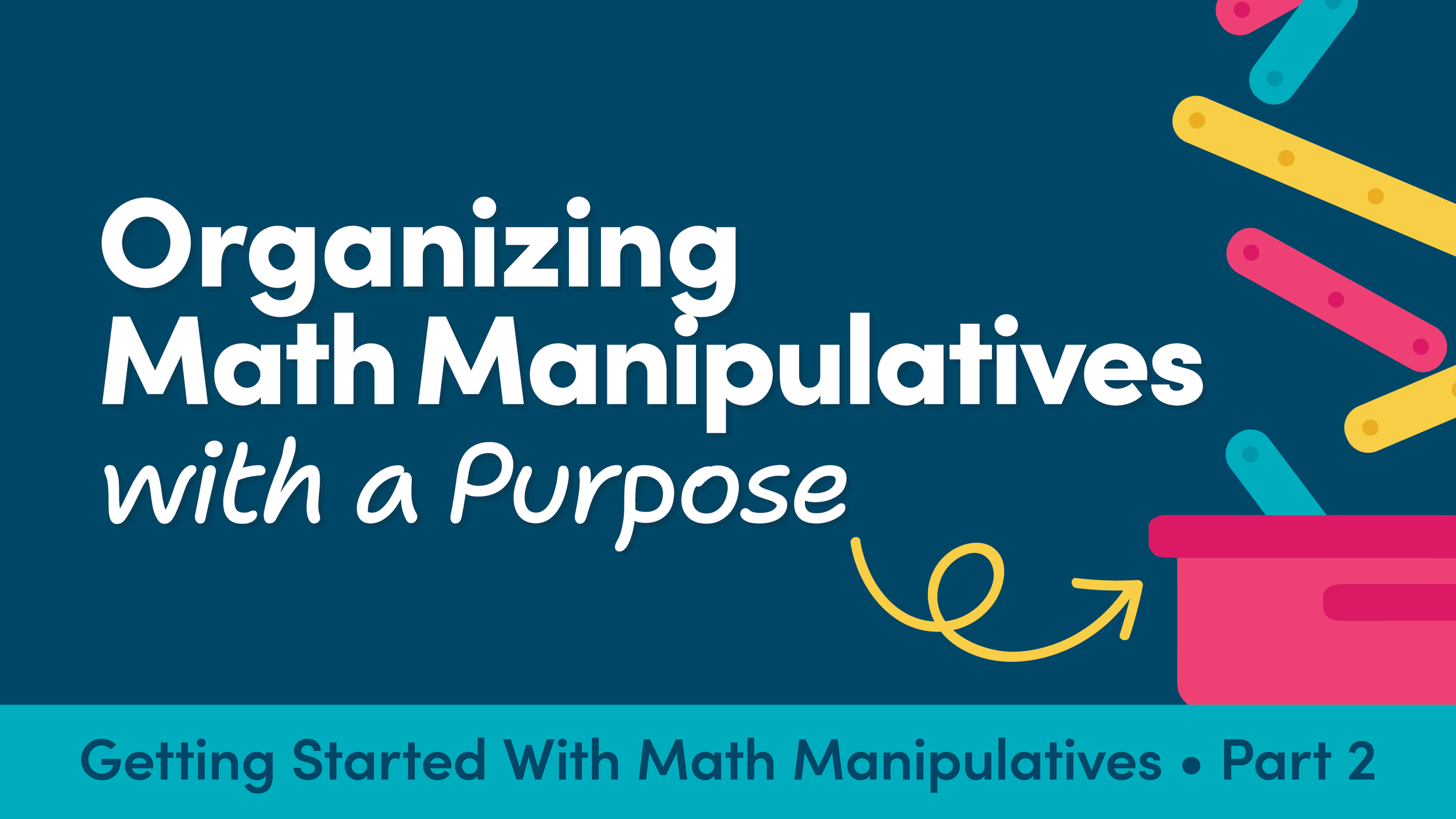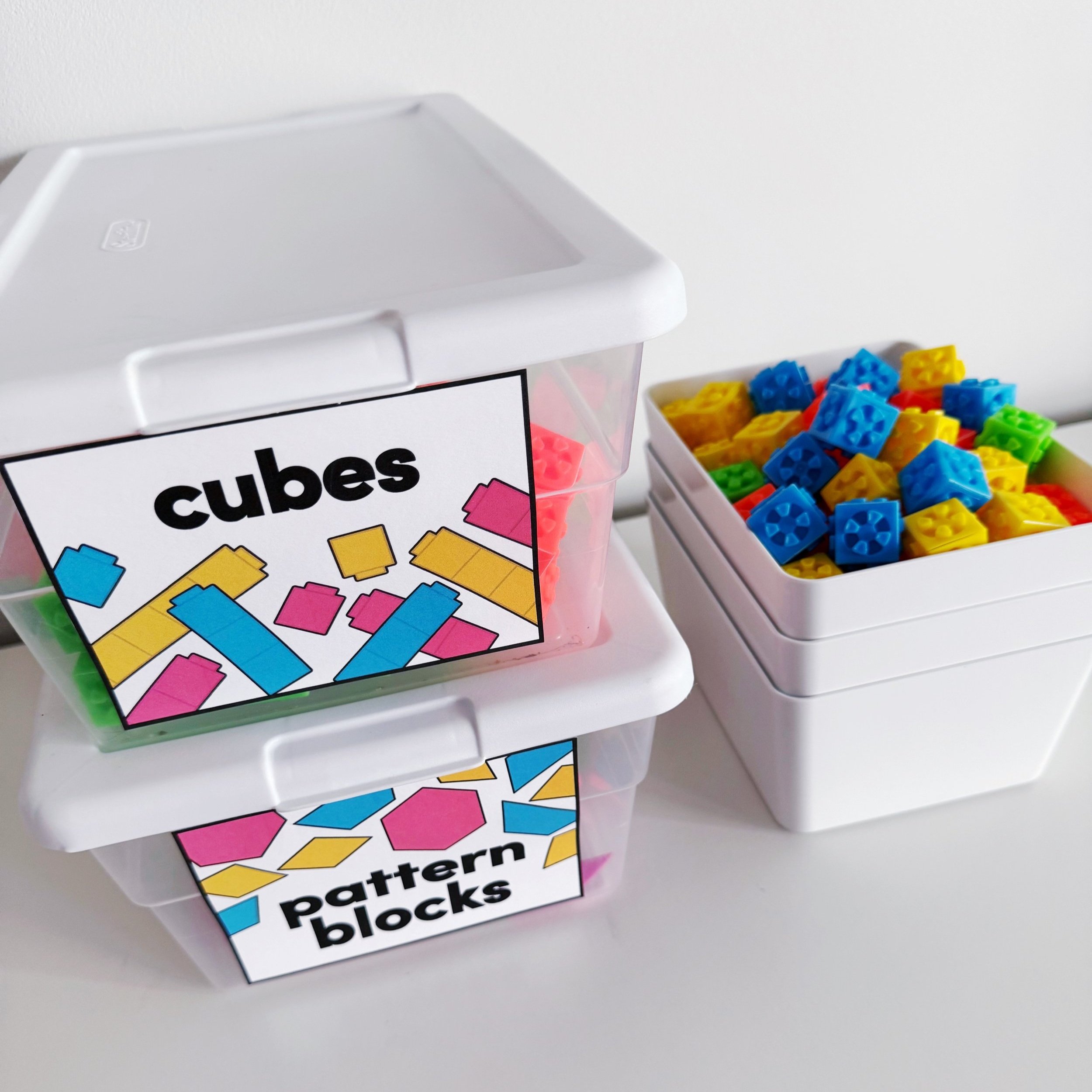How to Organize Math Manipulatives With a Purpose
Welcome to the Getting Started With Math Manipulatives series! I created this series to share tips and ideas to help you break through the biggest roadblocks that may be holding you back from using math manipulatives in your upper elementary classroom.
Did you miss Part 1 of the series? Click here to read about the Must-Have Math Manipulatives for Upper Elementary Classrooms.
One of the top things that holds teachers back from using math manipulatives more frequently is the feeling that there's "just not enough time!"
If passing out and cleaning up manipulatives feels like it's taking time away from more valuable parts of your math block, then I think you'll find this post (and the next one!) really helpful.
While I can't extend your math block for you, I can give you the gift of time with these math manipulative organization tips. Purposeful organization and solid routines give students more time to explore math concepts!
Organizing Math Manipulatives With a Purpose
Before I tell you how I organize my math manipulatives, I want you to consider three things before you start organizing:
Will the manipulatives be easy for students to access?
Will the pass-out and clean-up process be quick?
Will students have all the pieces they need to work with?
We need our organization system to be quick and easy, but we also want to be sure students have enough manipulatives to work flexibly with the math concepts (you'll see what I mean later in this post).
Two Categories of Math Manipulatives
I like to think of math manipulatives in two categories: those that come in sets and those that do not.
Manipulatives that come in "sets" have different types of pieces.
Base Ten Blocks - flats, rods, units
Pattern Blocks - hexagons, rhombi, trapezoids, triangles
Fraction Tiles - halves, thirds, fourths, etc.
Play Money - ten-dollar bills, one-dollar bills, quarters, etc.
Manipulatives that do not come in sets have a lot of the same type of piece (even if those pieces come in a variety of colors).
Square Tiles
Counters
Connecting Cubes (i.e., snap cubes or omnifix cubes)
I like to store these two categories of math manipulatives differently.
Organizing Manipulatives that Come in Sets
I store these math manipulatives with 2-3 sets per container. For example, in my manipulative library, I have 10-15 containers of base ten blocks, each with roughly 50 units, 30 rods, and 8 flats (about two sets of base ten blocks).
I organize "set" manipulatives this way for two reasons…
Partner and Small Group Work. More often than not, I have students work with manipulatives with a partner. While each student may model the math for themselves, they are often expected to share their thinking about their model with a partner. There is a lot of value in having students work together with manipulatives!
When manipulatives are stored with 2-3 sets per container, you have half the number of containers to pass out and just the right amount of manipulatives for each partner/small group!
Flexibility in Modeling. The main reason I store manipulatives 2-3 sets per container is because I think it's important for students to have access to more manipulatives than a single set provides.
Students can't model 2/3 + 3/4 with one set of fraction tiles because there aren't enough twelfths in a set. They also can't explore why 35 tens is the same as 350 with one set of base ten blocks. Having those combined sets gives students the opportunity to model math flexibly.
Side note: One thing to consider is how your tables/desks are positioned in your classroom. If every desk is separate and students do not work in close proximity, this system may not work for you (although I highly recommend you consider positioning desks in a way that allows for collaboration!)
Organizing Manipulatives that DON'T Come in "Sets"
I store all "non-set" manipulatives in large containers with smaller, empty containers next to them. When students need to use them, they simply grab a small container, scoop the manipulatives out of the larger container, and take them back to their table group.
This works because all the pieces are the same. This wouldn't work with "set" manipulatives because it's possible a student may not have scooped out enough of a specific type of piece.
One reason I store manipulatives this way is because it's expensive to make individual containers for each student or group. Also...who has that kind of storage space in their classroom anyways?!
Bonus Tips for Organizing Math Manipulatives
Containers
Find containers that stack easily and close securely. I don't particularly love containers where students have to sort each type of piece into different sections of the container because it takes extra time for students to sort during clean up. Dollar Tree, Target, and Amazon all have great options!
Click here to see a list of our favorite containers on Amazon!
Labels
Label everything! Students should know exactly where everything is so they can quickly find what they need! AND GUESS WHAT?! We created labels for you to use as you organize all your math manipulatives! You can find them in the FREE Getting Started With Math Manipulatives Toolkit!
If you're wondering how all of this will save time, you’ll want to check out Part 3 of the series! We'll tackle the "management" side of using math manipulatives. I'll be sharing how math manipulatives can be passed out or cleaned up in under two minutes, and help you establish clear expectations about math manipulatives.
Don’t miss the rest of the Getting Started With Math Manipulatives in Upper Elementary Series





